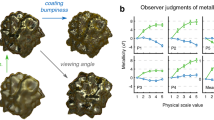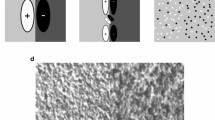Abstract
I SUPPOSE that, during the course of teaching most science subjects, there are occasions when students would be able to visualise more quickly what the lecturer is trying to describe if they could be shown the object in three dimensions. Wall-diagrams of the stereogram type and models are all right as far as they go, but they cannot show the relations of internal structures as well as they would if they were stereoscopic and completely transparent. So far as I know, the use of stereoscopic red-green wall-diagrams is rarely resorted to, yet they are extremely efficient and, within limits, are not difficult to produce. The details of the method I have found satisfactory are these:
This is a preview of subscription content, access via your institution
Access options
Subscribe to this journal
Receive 51 print issues and online access
$199.00 per year
only $3.90 per issue
Buy this article
- Purchase on Springer Link
- Instant access to full article PDF
Prices may be subject to local taxes which are calculated during checkout
Similar content being viewed by others
Author information
Authors and Affiliations
Rights and permissions
About this article
Cite this article
PURSER, G. Preparation of Stereoscopic Red-Green Wall-Diagrams. Nature 137, 660–661 (1936). https://doi.org/10.1038/137660a0
Issue Date:
DOI: https://doi.org/10.1038/137660a0
Comments
By submitting a comment you agree to abide by our Terms and Community Guidelines. If you find something abusive or that does not comply with our terms or guidelines please flag it as inappropriate.



